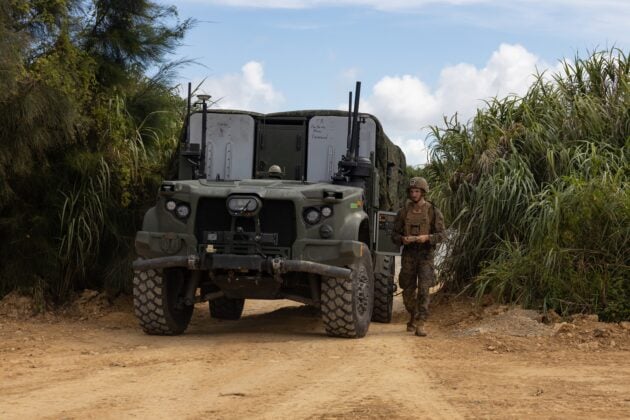
The U.S. Marine Corps has operated the Navy-Marine Expeditionary Ship Interdiction System (NMESIS) in Japan during Resolute Dragon 25.
According to the Marine Corps, the system was employed after a notional fire mission on Camp Hansen, Okinawa, on September 21, 2025. The exercise marks another step in strengthening bilateral defense cooperation between U.S. forces and the Japan Self-Defense Force.
Resolute Dragon is an annual joint exercise aimed at improving command and control, as well as multi-domain maneuver capabilities. The event focuses on defending key maritime terrain, a critical mission set in the face of Russia’s incursions and China’s expanding naval posture in the region.
The NMESIS, described by the Marine Corps as a “ground-based offensive anti-ship missile system,” is designed for sea denial and littoral protection. Its strength lies in mobility and rapid deployability, providing island defense forces with a platform capable of deterring and countering naval threats.
The system employs the Naval Strike Missile, a precision weapon known for its ability to engage heavily defended maritime targets at long ranges. Mounted on a modified Joint Light Tactical Vehicle chassis, NMESIS gives Marine Littoral Regiments a mobile and survivable tool to operate inside contested zones.
The Marine Corps emphasized that the system “offers a highly mobile and rapidly deployable island defense solution,” aligning with the service’s broader modernization strategy under Force Design 2030.
The deployment comes at a time when both the U.S. and Japan are adapting their defense concepts to meet the challenge of operating in the first island chain, where control of maritime routes and chokepoints could prove decisive in any future conflict.